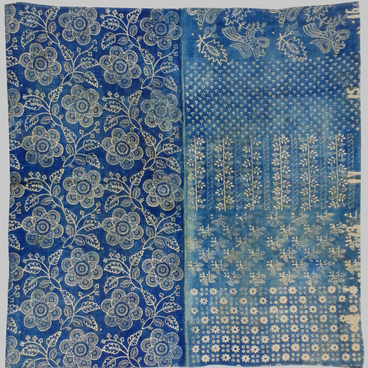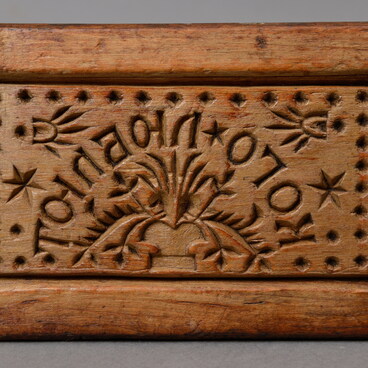The technology of manufacturing printed fabrics (with printed patterns) has been known in Russia since the 10th century. The heyday of the crafts engaged in the manufacture of printed fabrics fell on the 18th — first half of the 19th century. With the help of woodblock with carved ornaments, patterns were printed on white or painted canvas. The paint-coated woodblock was laid on a damp canvas and the print of the pattern was transferred to the fabric. Woodblocks with carved ornaments were made of dense types of wood: pear, maple, walnut or birch.
Whole counties of Russia were engaged in the printed fabrics industry. Old prints were decorated with various patterns, the flora and fauna, cheap popular prints, book illustrations, motives of oriental fabrics served as inspiration for the artists. The task of the master in the manufacture of the printed woodblock was to create a harmonious combination of pattern and background.
The most common ornaments of the 17th century were floral and geometric: the alternation of squares, circles, rosettes, triangles and flowers in a checkerboard pattern. In the 18th century, the design of the woodblocks changed. Instead of creating a carved wooden pattern, craftsmen began to lay out patterns from metal plates, strips, and tacks that were mounted on the board. Due to this, the patterns on the fabrics acquired a clear outline, a clearer elaboration of the pattern, and graphicality. The pattern became more complicated, new plots appeared, genre scenes depicting ladies and gentlemen. Floral patterns, images of animals and birds have become more detailed.
From the end of the 18th century, hand-printing was replaced by the products of cotton-printing factories. But throughout the 19th and early 20th centuries, woodblocks continued to be produced in Arkhangelsk, Vologda, Yaroslavl, Tver and many other provinces. After the revolution, even woodblocks with ‘actual’ drawings — locomotives and tractors- were created.
It should be noted that in the 19th century, vat printing came into fashion (from a vat of paint), thanks to which a fabric with a white pattern on a blue background was obtained. Normally the pattern was printed in only one color, usually blue, red or black. But multicolored ornaments were also created, in which a corresponding number of woodblocks with a different pattern were alternately laid on the same place, each of which was painted in its own paint.
Whole counties of Russia were engaged in the printed fabrics industry. Old prints were decorated with various patterns, the flora and fauna, cheap popular prints, book illustrations, motives of oriental fabrics served as inspiration for the artists. The task of the master in the manufacture of the printed woodblock was to create a harmonious combination of pattern and background.
The most common ornaments of the 17th century were floral and geometric: the alternation of squares, circles, rosettes, triangles and flowers in a checkerboard pattern. In the 18th century, the design of the woodblocks changed. Instead of creating a carved wooden pattern, craftsmen began to lay out patterns from metal plates, strips, and tacks that were mounted on the board. Due to this, the patterns on the fabrics acquired a clear outline, a clearer elaboration of the pattern, and graphicality. The pattern became more complicated, new plots appeared, genre scenes depicting ladies and gentlemen. Floral patterns, images of animals and birds have become more detailed.
From the end of the 18th century, hand-printing was replaced by the products of cotton-printing factories. But throughout the 19th and early 20th centuries, woodblocks continued to be produced in Arkhangelsk, Vologda, Yaroslavl, Tver and many other provinces. After the revolution, even woodblocks with ‘actual’ drawings — locomotives and tractors- were created.
It should be noted that in the 19th century, vat printing came into fashion (from a vat of paint), thanks to which a fabric with a white pattern on a blue background was obtained. Normally the pattern was printed in only one color, usually blue, red or black. But multicolored ornaments were also created, in which a corresponding number of woodblocks with a different pattern were alternately laid on the same place, each of which was painted in its own paint.


